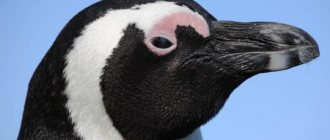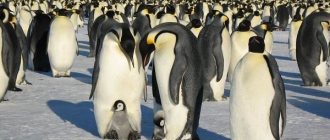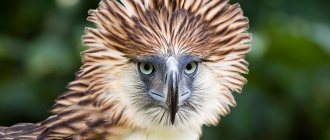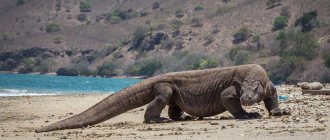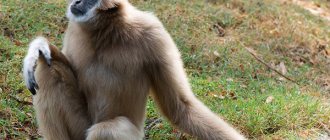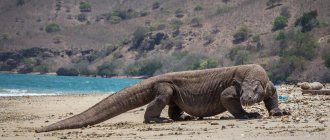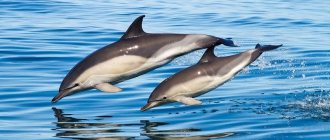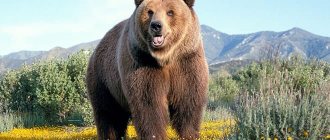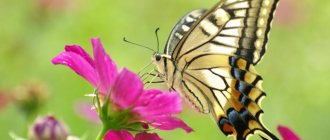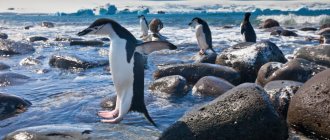Digital Zoo/Getty
Penguins are flightless birds, but their wings are still an important part of their bodies. Instead of floating in the air, penguins use their wings, which have evolved into flippers, to dive and move through the water. They are agile swimmers, but on land - where they spend 50% of their time - they waddle and use their tails for balance.
The 18 (or 20) species of penguins have much in common, and for the most part they are very similar to each other, although some have distinctive plumage, coloring and size. Read on to learn some unusual and unexpected facts about penguins.
Penguins live only in the southern hemisphere
Technically, one species of penguin lives in the Galapagos Islands, which straddle the equator, so some Galapagos penguins may occasionally cross into the Northern Hemisphere. With the exception of the occasional wanderer, all penguin species live in the Southern Hemisphere, where they seek out colder waters. Even the Galapagos penguin remains in the Cromwell Current, a cold ocean current that affects certain areas of the islands.
Penguins inhabit very cold regions, such as Antarctica, where we may be accustomed to seeing them. However, many penguin species live in temperate climates, such as in Melbourne, Australia, where 1,400 little penguins live on St Kilda Pier. The penguin colony there is so revered that volunteers are constantly present to keep people from getting too close. Little Penguin is a very appropriate name for the smallest species of penguin. ()
In addition to Australia and neighboring New Zealand, penguins also live in Argentina, Chile, Namibia, South Africa and even France (Pig Island, which belongs to France, to be precise).
You can find out more about penguin habitats on this page – 10 Places Where Penguins Live in the Wild.
LiveInternetLiveInternet
A penguin is a flightless bird that belongs to the order Penguinidae, family Penguinidae (lat. Spheniscidae).
*Penguins live in cold zones of the Southern Hemisphere; their concentrations are mainly observed in Antarctica and the Subantarctic region. They also live in southern Australia and South Africa, are found almost along the entire coastline of South America - from the Falkland Islands to the territory of Peru, and near the equator they live in the Galapagos Islands.
*The origin of the word “penguin” has 3 versions. The first involves a combination of the Welsh words pen (head) and gwyn (white), which originally referred to the now extinct great auk. Due to the similarity of the penguin with this bird, the definition was transferred to it. According to the second option, the name of the penguin was given by the English word pinwing, which translated means “hairpin wing.” The third version is the Latin adjective pinguis, meaning “fat.”
*Currently, science knows of 17 species of penguins, 13 of which are on the verge of extinction, which requires emergency measures to save them.
*The Magellanic penguin got its name thanks to the famous traveler who discovered an unusual flightless bird in 1520 near the island of Tierra del Fuego.
*Rock penguins received this nickname because they love not only to go into the water, but to jump into it from rocks.
*The lifespan of a penguin in nature is 15-25 years or more. In captivity, with ideal bird maintenance, this figure sometimes increases to 30 years.
*It is believed that penguins are very frost-resistant, and low temperatures are an indispensable condition for their habitat. In fact, among these birds there are also heat-loving varieties. For example, Galapagos penguins living on the islands of the same name. The year-round temperature there does not fall below +18 degrees.
*Penguins are communal birds. In the water element they live in flocks; on land they form colonies, the number of individuals in which reaches several tens and even hundreds of thousands.
*Penguins have almost no down or air under their feathers, and the feathers themselves resemble narrow and elongated scales. This type of cover does not retain heat well. Therefore, like seals, penguins have a layer of fat under their skin, which reaches a considerable thickness in species living at high latitudes.
*Penguin bones are heavy and non-pneumatic. For this reason, as well as due to the absence of subcutaneous air sacs and air under the feathers, penguins have a high specific gravity. Due to this, while on the surface, they sit very low in the water.
*However, this is how a diving bird should be, especially since it gets food only under water. In their ability to dive, penguins are again not inferior to seals and dolphins and are undoubtedly superior to other birds. But, of course, penguins do not always and not everywhere dive deeply and for a long time. This is not necessary near the coast or when there is an abundance of food in the upper layers of the sea. But when necessary, it is not a problem for them to stay under water continuously for several minutes and go to a depth of several tens of meters. Known absolute depth records, established experimentally, are 100 m for the Gentoo, 235 m for the king and 265 m for the emperor penguins. In the latter case, the bird stayed under water for 18 minutes!
*Their main propulsion mechanism when swimming is their wings-flippers, the movements of which resemble the flapping of flippers under water in sea turtles. The swimming speed is about 20-25 km/h, but if penguins are in a hurry, they can reach a speed of 40 km/h. For the emperor penguin they even indicate 45-58 km/h. Such quite considerable speeds are characteristic of dolphins.
Penguins do not require fresh water to quench their thirst. Their bodies contain glands that can remove salt from sea water. Salt impurities are released through grooves in the beak, and the bird, having desalinated the water in this way, completely quenches its thirst.
*Penguins' legs are short and thick, with 4 toes connected by swimming membranes. Unlike other birds, the penguin's legs are significantly moved back, which forces the bird to keep its body strictly vertical while on land.
Penguins are the only birds that can not only stand upright, but also walk in this position.
*As a result of evolution and lifestyle, the penguin's wings have changed into elastic flippers: when swimming underwater, they rotate in the shoulder joint like a screw.
*To maintain balance, the penguin is helped by a short tail, consisting of 16-20 hard feathers: if necessary, the bird simply leans on it, as if on a stand.
Fast-swimming penguins, like dolphins or fur seals, jump out of the water. And in the Antarctic, penguins escaping from predators, picking up speed, easily jump onto the high fast ice.
*Once a year, a penguin molts: new feathers grow at different rates, pushing out the old feather, so the bird often has an unkempt, ragged appearance during the molting period. During molting, penguins are only on land, try to hide from gusts of wind and eat absolutely nothing.
*In search of food, penguins are able to spend quite a lot of time under water, plunging into its thickness to 3 meters and covering distances of 25-27 km. The speed of a penguin in water can reach 7-10 km per hour. Some species dive to depths reaching 120-130 meters. During the period when penguins are not preoccupied with mating games and caring for their offspring, they move quite far from the coast, swimming out to sea at a distance of up to 1000 km.
*On land, when it is necessary to move quickly, the penguin lies on its belly and, pushing off with its limbs, quickly slides along the ice or snow. With this method of movement, penguins reach speeds of 3 to 6 km/h.
Penguins do not like to walk on loose snow, as they fall into it. To move comfortably during warmer weather, they lie on their stomachs and glide, using their wings and paws to push off.
*The bird's mouthparts work on the principle of a pump: through its beak it sucks in small prey along with water.
*All members of the penguin family are monogamous and form permanent pairs.
*During the mating season, males make rather loud sounds, reminiscent of the sound of a trumpet, trying to attract the attention of females.
*To breed, most penguins build nests. But there are species of penguins that are apparently too lazy and cunning to do this job. For example, the emperor penguin keeps an egg between its legs in a special pocket.
*Usually 2 eggs appear in a clutch, sometimes one, very rarely - three. The penguin egg is white or slightly greenish in color.
*Both parents incubate the eggs, replacing each other during absences to forage for food. The incubation period lasts from 30 to 100 days depending on the type of bird.
*Penguin chicks hatch blind, with thick down on their bodies, and only gain sight after a couple of weeks. The weight of a newborn penguin varies depending on the species and can reach 300 grams. Despite the care of their parents, more than 60% of the chicks die from hunger, low temperatures and attacks by skuas.
*For approximately 20 days, penguin chicks are under constant care, but after three weeks of care, the parents leave their babies, only occasionally bringing them food.
*This factor leads to the fact that slightly older penguin chicks begin to unite in groups, which scientists call “kindergartens” or “nurseries”. Often the period of formation of such “nurseries” occurs at a time when immature penguins or birds, which for some reason have lost their clutches, return to the colony from sea voyages. These individuals are actively involved in caring for the young, participate in their feeding and protect them from predatory skuas, thereby increasing the survival rate of the still defenseless chicks.
There are 18 (maybe more) species of penguins
Scientists disagree on how many species of penguins there are. According to the IUCN Red List, there are 18 species of penguins, a recent update from the 17 previously recognized. The crested penguin was previously considered a single species, but in 2006 it was split into two separate species: the southern crested penguin and the northern crested penguin. These two species are now recognized by most scientists, but not everyone agrees. And others think that several other penguin species should also be divided into two species, so that their number could soon reach 20 or 21. ()
Penguins have feathers, not fur.
An adult king penguin molting on a snowy day on South Georgia Island. Old feathers fall out. Anne Dirkse/Getty Images
One of the reasons penguins can survive in extremely cold conditions is because they have feathers rather than fur. Penguin feathers insulate the birds' bodies so well that overheating is a bigger problem for them than staying warm. ()
In addition to their amazing insulating properties, penguin feathers have some additional wonderful properties. They are also able to repel ice. This is why they can dive into and out of icy water without ice spots forming on their feathers. Scientists who have studied ice-repellent feathers believe that this feature is due to three characteristics: “a unique combination of the macroscopic structure of the feather, the nanoscale topography of its barbs, and the hydrophobicity of the fat present on the feathers.” This means that the special structure of the feathers, as well as the fat secreted and distributed throughout the feathers by the animal itself, prevents ice from getting on them. ()
Like all birds, penguins molt every year. Molting involves shedding old, worn-out feathers and growing new feathers. However, penguins molt much faster than other birds, within 3–4 weeks. Scientists monitored king penguins as they molted dramatically. During molting, penguins stay on the shore and do not eat. They lose half their weight, including almost all their fat and some of the muscle they need to build as their feathers grow. ()
Interesting Facts
These birds do not have external ears. Their hearing organ is two small holes located in the same place as human ears. What is the penguin's skin around them covered with? Also with small feathers. Hearing for such waterfowl is as important as for all birds, especially since they track each other through mutual calls.
Why aren't penguins' fur or feathers covered in ice? A group of Chinese scientists have found that penguin feathers do not freeze due to a special structure. The water simply drains before it can freeze. After a series of experiments, it was proven that drops of liquid linger on the body for a very short time. This is largely due to the ability of these birds to regulate their body heat.
Penguins have no teeth
Mike Korostelev/Getty
Like other birds, penguins have no teeth. However, they do have spines in their beaks that may look a bit like a tooth. They also have these spines on their tongues - both sets of spines point backwards. This allows them to hold fish or other prey in their mouth and also helps them swallow.
Lifestyle
There is a lot of interesting information about penguin representatives. Penguins are excellent swimmers. They move in water at speeds of up to 10 kilometers per hour. While moving in a body of water, birds can jump into the air for a few seconds, which is reminiscent of the swimming of dolphins. There is also information that these animals can stay under water for up to 20-30 minutes and reach a depth of 500 m.
When leaving a pond, birds can jump to a height of about 2 m. On land they move at a speed of 4-7 km/h. They can also slide down mountains on ice or snow while lying on their stomachs. In this way, penguins often cover kilometers between a body of water and the place where their relatives live.
Since penguin representatives are social creatures, they unite in colonies consisting of tens or hundreds of thousands of individuals. Birds communicate with each other using calls that resemble trumpets and rattles.
In nature, penguins live 15-25 years. Under the right conditions of maintenance and care, individuals can even live up to 30.
Birds protect themselves from dangerous animals with the help of fins and beaks. Penguins try to nest in isolated areas, so they do not have many natural enemies in the world around them. But their cubs easily become prey for brown skuas. Seagulls often steal eggs that are left unattended by their parents. The following dangerous creatures can await penguins in reservoirs:
- leopard seals;
- seals;
- sea lions;
- killer whales;
- sharks.
Penguins usually approach a pond in groups because they are afraid of becoming victims of aquatic creatures. When one individual plucks up courage and enters the water, others boldly follow it.
They eat a variety of protein-rich foods
Penguins eat a variety of fish and crustaceans. Specific food choices depend on where they live and the type of penguin. Larger penguins can dive deeper into the water, where they can catch squid and cuttlefish, while smaller penguins scrape krill from the underside of the ice. Little penguins can only dive to depths of 0.6 to 15 meters on average, but king penguins can dive to depths of 90 to 275 meters. (, , )
Penguins eat whatever they find, within the limits of their preferences. Various species of penguins, including yellow-eyed and king penguins, will eat everything from squid and crustaceans to fish such as sardines, sprats and other smaller fish. ()
Birds swallow fish whole, which makes it easier for their chicks to regurgitate food. If they are just feeding, their stomach breaks down the fish (instead of chewing with their teeth like primates and ruminants do).
Males do the nesting
Photo: Martin Wettstein
Every year, penguins gather in bustling, numerous colonies for one reason: to mate. The male usually arrives first to conquer the best nesting sites. A shallow dugout or pile of rocks serves to protect the eggs and chicks from the elements, be it sun, wind, snow or rain. Dominant chinstrap penguins often steal pebbles from less experienced males, which is important because about 14% of chicks drown in flooded nests after a storm. Emperor and king penguins are noticeably different from all other species; they abandon the nest altogether and instead carry a single egg on the tips of their legs.
Females arriving at a colony choose the most physically robust mate to give their offspring the best chance of survival. Feather color is one of the indicators of health. Yellow-orange pigments, carotenoids, are used by the immune system to fight infections. Bright plumage indicates a healthy bird.
Once a couple decides to mate, a series of courtships ensues, strengthening the bond. Vocal duets of shrill calls create a deafening chorus in the colonies at this time. Preening and grooming each other is common practice, possibly helping to get rid of harmful parasites that could cause harm later in the chicks' raising period. Courtship ends when the female lies on her stomach to seduce a mate and the male sits on the female's back to copulate.
Penguins are monogamous
Coral Brunner/Getty
During the breeding season, once the penguins have chosen a mate, they remain alone, but the following year they may choose a different partner. Some penguins lay two eggs per season, but the largest species, such as emperor or king penguins, lay only one. ()
A pair of penguins turn the egg over during hatching and keep it warm. Emperor penguins are the only species in which the male penguin takes full responsibility for incubating the eggs. Only little penguins have more than one brood per season. ()
Raising chicks
Penguins have offspring at 2-4 years of age. Males build a nest and then attract females with their calls. Animals often change partners. However, some mate with the same individuals with whom they produced offspring the previous year.
Usually parents hatch eggs on their feet in turns. Laying occurs in spring or summer. In cold regions, animals hatch one egg; in warm climates, penguins can have several babies. Since individuals keep in colonies, in many species laying occurs almost simultaneously. Unfortunately, it happens to young couples that their chicks do not hatch. Hatching success increases with age.
In the first few weeks after birth, the chicks are under the care of one parent while the other goes off to look for food. When the cubs grow up, they are sent to a “kindergarten”: they are looked after by young individuals or penguins who do not have children. And both parents go hunting. Babies eat semi-digested food and milk, which their parents secrete from their stomachs. The chicks hide from the cold in the lower folds of the adult's abdomen.
Juveniles of the larger penguin species develop a brown coat that later sheds unevenly. When an individual acquires the appearance characteristic of adults, it begins to lead an independent lifestyle.
Giant penguins once lived on earth
Mint Images - David Schultz/Getty
The largest living penguin is the emperor penguin, which can reach a height of about 1.2 meters. However, fossils discovered in 2022 in New Zealand revealed that human-sized penguins once roamed the earth. They lived between 55 and 60 million years ago, probably weighed about 100 kilograms and stood about 1.77 meters tall. (, )
"That a penguin existed in the Paleocene that competed with the largest previously known species suggests that gigantism in penguins arose soon after these birds became flightless divers," the researchers write. These were not the only large penguins in prehistoric times, but they are the oldest and largest that scientists have discovered so far. ()
Penguins use their sense of smell to find krill.
The olfactory lobe in the penguin brain is relatively large. Historically, penguins were thought to have a rudimentary sense of smell, but recent research suggests that scent may play a more important role in penguin life than previously thought. Studies of African, Peruvian and Chinstrap penguins have shown that some individuals are able to detect prey using olfactory cues, such as chemicals released by feeding krill. The Humboldt penguin uses scent to distinguish between related and unrelated individuals and to find a mate.
All penguins are black and white
No matter where you find them, or how big or small they are, all penguins have what scientists call "protective coloration." They have a black back, the upper part of the wings are black, and the neck, chest and belly are white.
Their coloring serves as a very useful camouflage. Predators such as killer whales and seals mostly swim underneath the penguins in the water, and when they look up, it becomes more difficult to distinguish the penguins from the surface of the water. From above, their dark backs are less noticeable as they blend into the water around them. However, since most penguins live in polar regions, which are often covered with snow or ice, they are easily visible on land. ()
Penguins' diet consists of krill, squid and fish.
The golden-headed penguin is the largest consumer of marine resources among seabirds, consuming 9.2 million tons of prey annually. With such a high demand for food, penguins tend to form colonies near waters where phytoplankton blooms, providing food for the fish, krill and squid that the penguins feed on.
To catch one krill, the penguins surround the school, compacting it until some of the krill are separated from the group, at which point a penguin swoops down from below. The penguin's tongue, although lacking almost all taste buds, has large, keratinized bristles that help capture krill or fish as they enter the mouth.
Color in penguins is created by structures that no other animal has.
Penguins may be primarily black and white, but glimpses of color such as blue or yellow are important as signals to other penguins. And according to the fossil record, now-extinct penguins were even more colorful. (, )
Interestingly, they have developed unique microstructures of this color that no other animal has. This is because they evolved them over time, separate from the color types seen in other birds. However, unlike other birds that often need to eat certain foods to color their feathers, penguins can produce the pigments in their feathers themselves. ()
It's unclear where their name came from
The name "penguin" first appeared in the 1500s as another name for the great auk - Europeans who first encountered penguins thought they were similar to the Northern Hemisphere bird (even though they are not related). Dictionaries such as the Oxford English Dictionary and the American Heritage Dictionary suggest that the word "penguin" comes from the Welsh word "pen" (head) combined with the word "gwyn" (white). Another theory about the origin of this word is that it comes from the Latin word "pinguis", meaning "fat". ()
Penguin populations are declining
According to the IUCN, populations of most penguin species are declining, with five species declared critically endangered: Spectacled penguin (Spheniscus demersus), Galapagos penguin (Spheniscus mendiculus), Yellow-eyed penguin (Megadyptes antipodes), Northern crested penguin (Eudyptes moseleyi) and Great crested penguin penguin (Eudyptes sclateri). ()
Most of the ways people can help penguins is by keeping their home and the animal's hunting grounds—the ocean—clean and healthy. It is also important to provide penguins with enough food and to minimize climate change so that ice-dependent penguins can continue to live in these areas.
